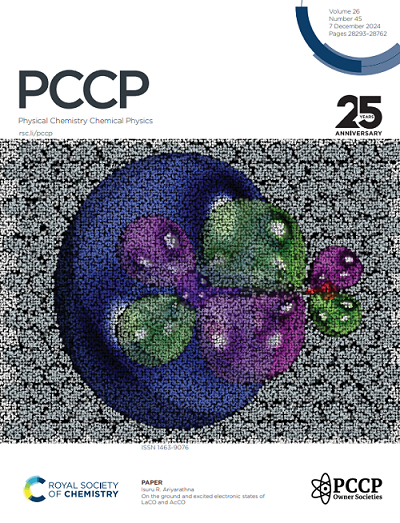Wetting behavior of polyoxyethylene-type nonionic surfactant with multi-branched chains on solid surfaces.
IF 2.9
3区 化学
Q3 CHEMISTRY, PHYSICAL
引用次数: 0
Abstract
Wetting of solid surfaces by surfactants is a fundamental phenomenon exploited in various applications, including cleaning, coating, dispersion, and adhesion, and in electronics materials. In this study, the interfacial properties and wettability of a polyoxyethylene (EO)-type nonionic surfactant with multi-branched chains (bC7-bC9EO15.8) were systematically investigated and compared with those of corresponding linear double-(C8-C8EO16.2) and single-chain (C16.8EO15.5) surfactants. Although bC7-bC9EO15.8 exhibited a higher critical micelle concentration (CMC), it significantly reduced the surface tension to 26.3-27.0 mN m-1, exhibiting excellent surface activity due to its methyl-rich branched structure. Additionally, contact angle measurements revealed that bC7-bC9EO15.8 facilitated rapid spreading on hydrophobic surfaces even at low concentrations, with significantly lower contact angles on glass surfaces than those of its linear-type counterparts. This behavior was attributed to initial EO-chain adsorption followed by hydrophobic-chain reorientation, possibly involving micelle adsorption or partial bilayer formation at the solid/liquid interface. Moreover, bC7-bC9EO15.8 consistently exhibited the highest wetting free energy across all substrates, regardless of surface polarity. These findings highlight the key role of branched hydrophobic chains in enhancing wettability.多支链聚氧乙烯型非离子表面活性剂在固体表面的润湿行为。
表面活性剂对固体表面的润湿是一种基本现象,可用于各种应用,包括清洁、涂层、分散和粘附,以及电子材料。本研究系统研究了多支链聚氧乙烯(EO)型非离子表面活性剂(bC7-bC9EO15.8)的界面性能和润湿性,并与相应的线性双链(C8-C8EO16.2)和单链(C16.8EO15.5)表面活性剂进行了比较。bC7-bC9EO15.8虽然具有较高的临界胶束浓度(CMC),但其表面张力显著降低至26.3-27.0 mN m-1,由于其富含甲基的支链结构,具有优异的表面活性。此外,接触角测量表明,bC7-bC9EO15.8即使在低浓度下也能在疏水表面上快速扩散,其在玻璃表面的接触角明显低于其线性对偶物。这种行为归因于最初的eo链吸附,然后是疏水链重定向,可能涉及胶束吸附或在固/液界面形成部分双层。此外,无论表面极性如何,bC7-bC9EO15.8在所有衬底上均表现出最高的润湿自由能。这些发现突出了支链疏水链在提高润湿性方面的关键作用。
本文章由计算机程序翻译,如有差异,请以英文原文为准。
求助全文
约1分钟内获得全文
求助全文
来源期刊

Physical Chemistry Chemical Physics
化学-物理:原子、分子和化学物理
CiteScore
5.50
自引率
9.10%
发文量
2675
审稿时长
2.0 months
期刊介绍:
Physical Chemistry Chemical Physics (PCCP) is an international journal co-owned by 19 physical chemistry and physics societies from around the world. This journal publishes original, cutting-edge research in physical chemistry, chemical physics and biophysical chemistry. To be suitable for publication in PCCP, articles must include significant innovation and/or insight into physical chemistry; this is the most important criterion that reviewers and Editors will judge against when evaluating submissions.
The journal has a broad scope and welcomes contributions spanning experiment, theory, computation and data science. Topical coverage includes spectroscopy, dynamics, kinetics, statistical mechanics, thermodynamics, electrochemistry, catalysis, surface science, quantum mechanics, quantum computing and machine learning. Interdisciplinary research areas such as polymers and soft matter, materials, nanoscience, energy, surfaces/interfaces, and biophysical chemistry are welcomed if they demonstrate significant innovation and/or insight into physical chemistry. Joined experimental/theoretical studies are particularly appreciated when complementary and based on up-to-date approaches.
 求助内容:
求助内容: 应助结果提醒方式:
应助结果提醒方式:


